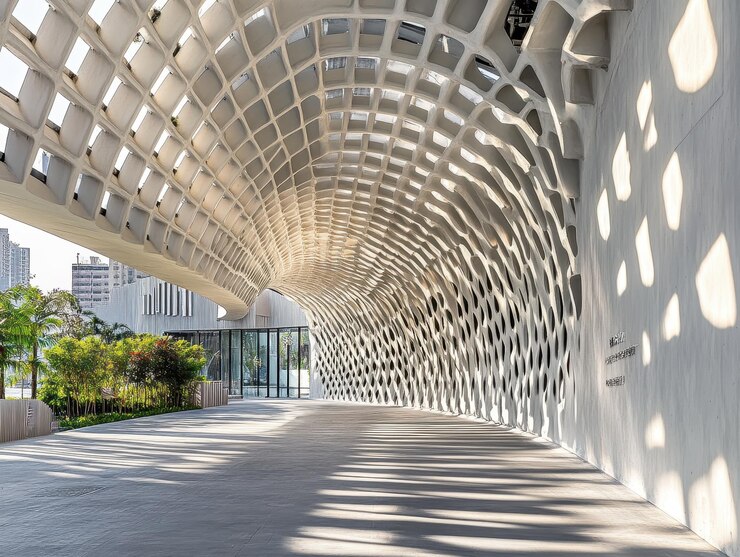In the world of architecture, technology has always been a catalyst for creativity. One of the most exciting developments of recent years is parametric design—a groundbreaking approach that leverages algorithms to generate innovative and complex architectural forms.
Parametric design is not just a tool; it’s a paradigm shift, allowing architects to explore limitless possibilities while optimizing functionality, aesthetics, and sustainability.
What is Parametric Design?
Parametric design relies on algorithms and computational models to manipulate variables and generate forms dynamically. Instead of designing a structure piece by piece, architects define parameters (e.g., size, shape, material properties), and the software creates multiple iterations that fit those criteria.
Why Parametric Design is Game-Changing
- Complex Geometries Made Easy
Parametric tools make it possible to design intricate forms—like fluid curves or honeycomb facades—that were previously difficult to achieve. - Customization and Personalization
By tweaking parameters, architects can create highly customized designs tailored to site-specific requirements or client needs. - Sustainability by Design
Parametric design enables performance analysis early in the design process. Architects can optimize for factors like energy efficiency, daylighting, and material use.
Examples of Iconic Parametric Architecture
- The Gherkin (London): Its unique, energy-efficient form was generated using parametric algorithms.
- Zaha Hadid’s Heydar Aliyev Center (Baku): A flowing, organic structure that redefines the concept of spatial continuity.
- Beijing National Stadium (Bird’s Nest): The intricate steel lattice was optimized through parametric design to balance aesthetics and structural integrity.
The Tools Behind the Trend
Parametric design relies on software like Grasshopper (for Rhinoceros), Autodesk Dynamo, and Maya. These tools empower architects to visualize, iterate, and refine their designs with unparalleled precision and creativity.
The Future of Parametric Design
As computational tools evolve, parametric design is becoming more accessible, enabling architects worldwide to innovate. Beyond aesthetics, the focus is shifting toward creating responsive, adaptable, and sustainable buildings that meet the challenges of modern living.
Parametric design is more than a technique; it’s a mindset—a way of thinking about architecture that blends creativity, technology, and functionality. As we look ahead, the possibilities are as dynamic and evolving as the algorithms themselves.


